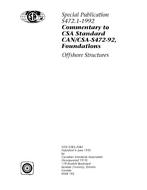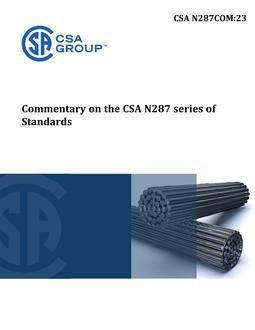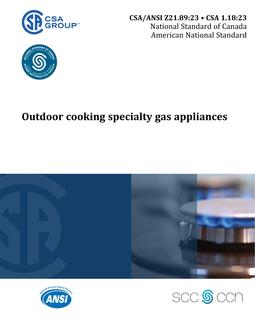
CSA S472.1-1992
- Comments Off on CSA S472.1-1992
- CSA
Click here to purchase
1. Scope
1.1
General This Commentary applies to the design of foundations for fixed offshore structures. The term “”foundation”” is defined as the seabed, any fill, and any artificial elements (eg, piles or skirts) that penetrate or rest upon these materials and that in whole or in part support production structures and facilities. The Standard is divided into subsections that address (a) site investigations (Clause 4); (b) general engineering principles (Clause 5); (c) foundations for gravity-base structures (Clause 6); (d) fill structures (Clause 7); (e) fill-retention structures (Clause 8); (f) pile foundations (Clause 9); (g) inspection and performance monitoring (Clause 10); and (h) decommissioning (Clause 11).
There is limited experience with fixed offshore production structures in the Canadian environment. Canada has, however, been a leader in the design, construction, and operation of fixed hydrocarbon exploration structures in ice-infested waters.
World experience with fixed offshore production structures stems primarily from installations in the North Sea and the Gulf of Mexico. Such experience provides an excellent starting database. However, the geological and environmental conditions in Canadian offshore regions are unique in many respects.
In recognition of the unique environmental conditions that characterize the Canadian offshore regions, as well as the lack of national precedents, the Standard has been written as a “”perfo rmance”” Standard and, therefore, does not detail specific solution methodologies. It emphasizes the use of good geotechnical practice, engineering, and construction that give due regard to precedent, and the importance of effective construction inspection and operational monitoring to complement design.
The Commentary is intended to provide initial design guidance that is substantiated by the use of references. However, due to the likelihood of changes in the state-of-the-art, it is incumbent upon the user of this Commentary to assess the appropriateness of the references cited.
In summary, the Standard, together with this Commentary, has been written to provide as much latitude as possible to responsible designers, owners, and operators in order to allow them to effectively address the challenges of geotechnical engineering in the Canadian offshore regions.
Product Details
- Published:
- 05/12/2000
- Number of Pages:
- 56
- File Size:
- 1 file , 2.2 MB



